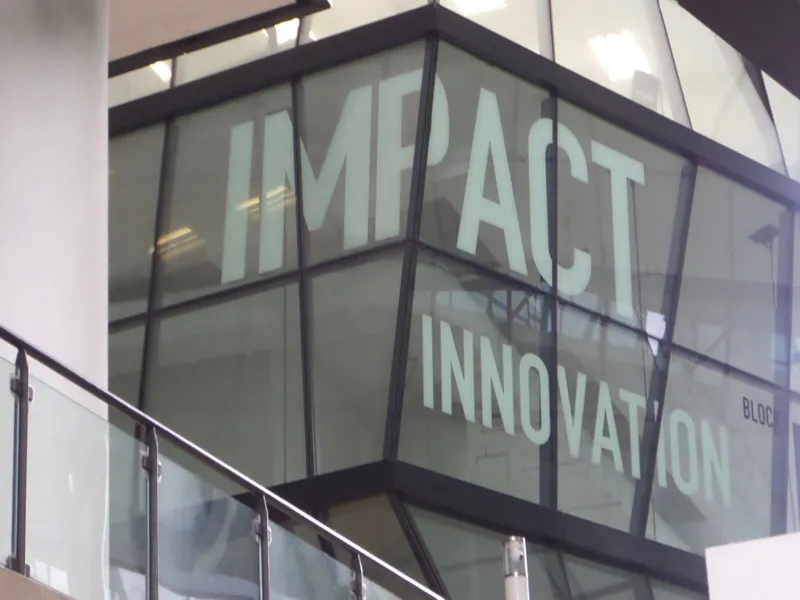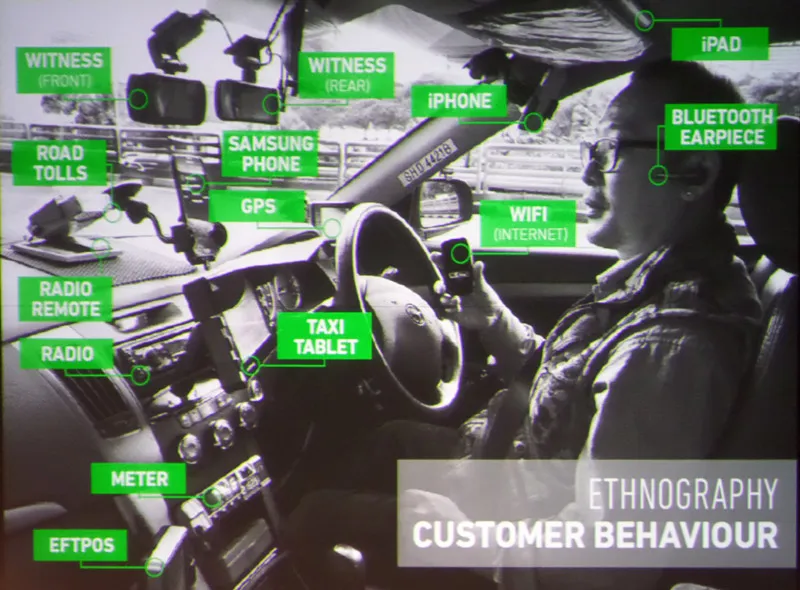Ethnography, ecosystems, exponential change: 16 tips for crafting better digital experiences
Digital design is becoming a ‘vertical’ and ‘horizontal’ discipline and a crucial factor for creating the next generation of effective experiences. Driving forces, success enablers and changing ecosystems in digital design were discussed and debated at the thought-provoking panel titled ‘Designing with Digital Technology,’ at the Singapore Design Business Summit.
Moderated by Bhavna Singhal, Project Manager at DP Architects, the panel at Lasalle College featured Michael Priddis, MD, BCG Digital Ventures Asia; Andrew Au, MD, Southeast Asia, Imagination.com; and Raven Chai, Founder, UX Consulting.

Here are my top 16 takeaways and tips for designers and startups from this insightful panel. See also my earlier columns 10 tips for experience design and 8 tips for product developers from Singapore Design Week.
- Think beyond MVP to MMP
Much has been written about lean startup and the Minimum Viable Product (MVP), but for scale and commercial success, designers should be thinking about Minimum Marketable Product (MMP), said Michael Priddis. “You should be able to zoom in and see what is needed today – but also zoom out and see what is needed in 2020 and 2030. This calls for an innovation leap,” he said. Skills in commercial forecasting are also needed for sustainable design, but with a healthy margin for changes in technology and environment.
- From USP to UXP: experience is everything
“We have moved from a world of USP (unique selling point) to UXP (unique experience point). Experience is everything,” said Andrew Au, MD, Southeast Asia, Imagination.com. We are seeing the rise of a new class of players in this regard: experiential agencies, in addition to ad agencies, PR agencies, creative agencies, digital agencies and DM agencies (direct marketing). Large firms like GE have designed the Ecomagination City in Masdar City, Abu Dhabi, to show how cities of the future can be conceived; it blends realtime inputs by urban planners and data scientists. Shell launched the EcoMarathon with digital treasure hunt called PlanetYou, to challenge people to think of how innovation can meet energy challenges of the future.
- Ethnography matters in the digital world as well
Tools derived from ethnographic research are useful in the physical world as well as the digital world, right from menu usage to professional interactions. “Design plays an important role in saving lives and improving health in diseases like diabetes,” said Michael Priddis. He cited work which mapped out all stakeholders in diabetes treatment: patients, doctors, clinics, families and NGOs. “We built an information map of diabetes diagnosis and prescription for patients and found there is information overload especially at critical times when important and sometimes disturbing news is broken to the patient,” Priddis explained. In the new design, handwritten explanations and prescriptions are replaced by tablet interfaces, clear visualisations, mobile reminders and wearable devices. Success factors for experience design are insights, ethnography, digital innovation and business models, Priddis said. (See also my framework of The '8 Is' of Design Thinking for Startups.)
- Empower the end user
The best digital experiences are those which not just inform customers or meet their needs, but empower them. “Human centred design consists of four phases: Insights, Design, Evaluate, Empower,” said Raven Chai. “A truly good designer is humble and patient, the listening type,” said Michael Priddis, and should be able to empathise with the end user in a constructive manner.

- Reduce digital clutter
In an era of ubiquitous smartphones and even Internet of Things (IoT), there is a real risk of digital clutter with too many devices, interfaces and data streams. Michael Priddis showed a hilarious yet disturbing example of device overload in a Singapore taxi, with over a dozen gadgets such as a taxi meter, safety tracking devices, Bluetooth, mapping device, personal phone and digital entertainment. “There is a need to create a more coherent experience,” said Priddis, based on better knowledge prioritisation and car environment design.
- Think O2O
“An emerging trend is the blending or interleaving of digital space and offline place,” said Raven Chai. Digital design has become a ‘vertical’ and a ‘horizontal,’ and is becoming embedded in other forms of design as well such as industrial engineering and smart buildings. Chai cited a useful taxonomy to show these inter-relationships by Kicker Studio.
- Think ecosystem
The inter-leaving of devices and systems calls for major re-designs of ecosystems. “There is a huge opportunity for car manufacturers and technology players to work together. What will cars be like in 2018? In 2020?” asked Michael Priddis. How will electric cars change the design of transportation systems via electric charging stations? What will happen when China becomes the world’s largest automotive market? When will new initiatives like Beidou2/Compass and Galileo replace the US military’s GPS? How will driverless cars transform public transportation? “In the future, don’t just think of the next car – think of the next road, next parking space, next mechanic, next fleet,” advised Priddis.
- Blend the technical and the emotional
Good digital design blends technical and emotional considerations. “UX is emotional, and addresses how people feel while they do things. UI is technical and captures what people use to interact with the product,” explained Raven Chai. He showed his company’s case study of the design of mobile operator store SingTelShop.com, created via user profiles, competitive analysis, wireframe design, A/B testing and usability testing for e-commerce fulfilment. Another case study was the iOCBC trading platform, which involved UX designers outside of the usual clique of OCBC’s system integrators. Rounds of workshops and customer interviews were held in order to understand the buying context, involving conversations between investors, their families and influencers.

- Choose your design elements well
Designing is more than just sample, test and iterate – it is also about careful choice of customers to interview, smart pick of areas that need validation via testing, the right pace of iteration, and the prioritisation of implementation decisions. “Pick your battle effectively. Which touchpoint do you want to focus on? What are the frustrations and painpoints that are the most important to solve?” said Raven Chai. “Just doing research and surveys is not enough – pick your audience carefully! Otherwise you will have a case of Garbage In, Garbage Out (GIGO),” he added.
- Design behaviours, not just products or services
Designers should keep an eye on emerging research in fields like psychology to see how it affects digital behaviours. “Look at how to design behaviours, not just design products or services. Psychological research teaches us good insights about nudge theory, or how to create and reinforce positive behaviours in systematic incremental ways,” said Michael Priddis. Good digital experience design creates positive behaviour changes, eg. healthier habits, smarter financial searches.
- Mobile is more than portable Web
A number of designers still think of mobile as a smaller and portable version of the Web, but it is much more. “A bad practice is to force-fit Web design into mobile,” cautioned Raven Chai. Mobile is a different experience – it is good for timely alerts, simple transactions, and activities on the move – including in trains and toilets!
- Digital design gives you global scale
The global nature of social media and apps allows for new kinds of digital experience design. “Digital technology allows you to develop products with scale. For example, you can target a product for all professionals in the world via LinkedIn,” observed Michael Priddis.
- Give back to the community
Designers should avoid creating the false impression that they are snobbish and hard to work with. Creativity often means bending and even breaking rules, but that’s a better trend for the long term. Design thinking should apply not just to urban settings but rural experiences as well, and should be promoted in an engaging manner to wider audiences. “We have created the UXSG Forum. We have DJs at our conferences to pump up the energy and fun,” said Raven Chai. A number of related forums are also springing up around the world, such as DestrActions (Design, Distraction, Interaction), Lean Startup Circle and PechaKucha.
- Think B2B
While much media attention understandably focuses on the B2C sector for digital design, there is a lot of action in the organisational space and inter-organisational settings as well. “Look at B2B and government space for the future of IoT,” advised Michael Priddis. His firm is designing digital strategies for new banks in Thailand and India, and also connects startups with large corporate customers.
- Show the metrics – and speak up!
Effective experience design improves the consumer engagement in qualitative and quantitative ways. “In 2009, we offered ‘service design’ to engage employees and customers. It helped increased sales at SingTel by 40%. Their flagship centre got more compliment letters than complaint letters,” said Raven Chai.
Many design projects get shelved at the last minute because of political reasons, bureaucracy or inertia. “It is your job as designers to convince clients about your customer insights. You should begin by requiring managers to attend prototype testing exercises so that they understand what is at stake,” advised Raven Chai.
- Grasp exponential change
Digital technology is growing at an exponential rate, and has a much wider impact on products, services and experiences than we think. For centuries, society has been used to incremental growth rates; now we are facing exponential change rates. “Designers and managers need to understand the exponential change due to digital media. Everyday there is some remarkable surprise from a sector or place round the world due to exponential technology change,” said Michael Priddis. He cited the classic example of the farmer who asks a king for double the number of rice grains on each chess board square, starting with one grain – the final sum was more than all the assets of the kingdom!
Long term success for experiences needs a blend of disciplines. “Successful design needs strategists, designers and technologists,” summed up Michael Priddis.







